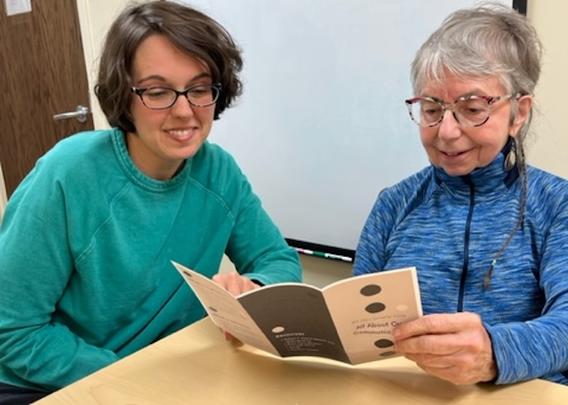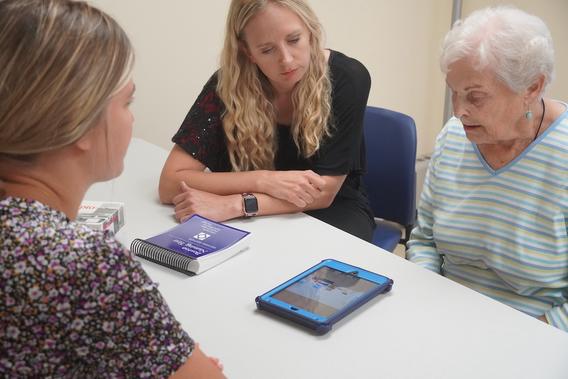Types of Clinic Services
Communication Evaluations
The therapy team interviews clients and provides recommendations and resources at the end of the evaluation.
Individual Therapy Services
Sessions focus on communication goals in areas such as voice, fluency, articulation, language, cognition, social communication, and augmentative/alternative communication.
Group Services

Services are based on community interests. Examples of groups the clinic has offered:
- Speech/language groups for children.
- “Socialize!” for people with aphasia.
- "SPEAK OUT!" group voice therapy for Parkinson's disease.
- Social competency group for adults.
- Eye gaze communication group for people who use Augmentative and alternative communication (AAC).
- Transgender voice group for adults who wish to make changes in their voice and speech.
Clients who use RFP Clinic
People with Communication Delays and Disorders
People may experience a variety of concerns about their communication and may benefit from RFP Clinic programs. Find information about specific communication disorders on the American Speech-Language-Hearing Association website.
Communication delays and disorders include:

- Speech sound production impairments: Mispronouncing, leaving out, or substituting other sounds in words. Inability to speak.
- Voice impairments: A hoarse, gravelly, or strained voice. Struggle with volume or pitch.
- Fluency: Stuttering or difficulty with fluent speaking.
- Language comprehension or expression: Struggling to follow directions or understand what others are saying. Difficulty finding words, putting words into sentences, or with language-based academic subjects such as reading, writing, or typing.
People with Communication Differences
Individuals who have typical communication but want to make changes in their speech and/or language skills might elect to use RFP Clinic services.
- Accent modification: Those with regional or national origin accents may choose to expand their accent skills for communication.
- Gender-affirming voice and communication: Changing voice and communication to reflect gender identity. Clients can learn to make changes in a way that protects their voices from unintended damage.